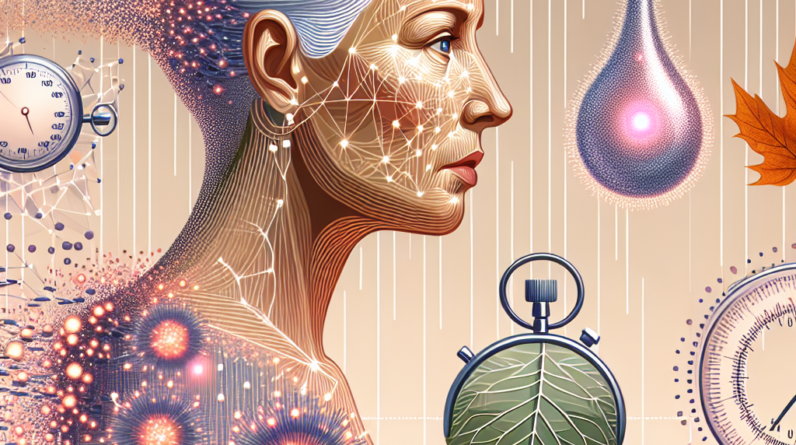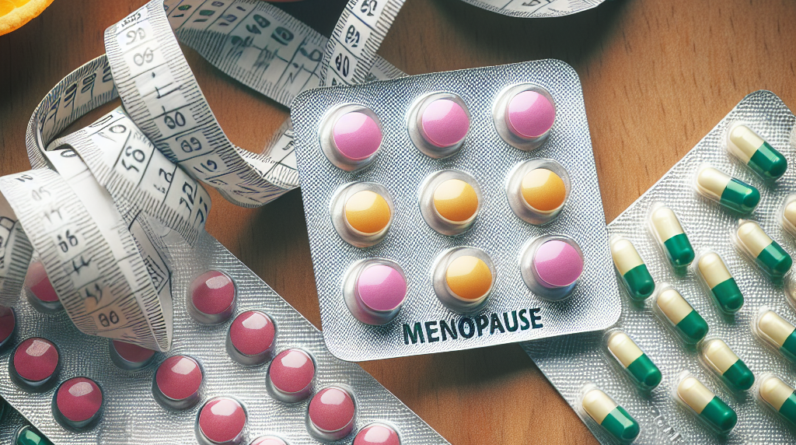
If you’re going through menopause and have been experiencing discomfort, you’re not alone. In this article, we’ll explore the connection between yeast infections and menopause, and provide some helpful information on how to manage these issues. Menopause can bring about a range of changes in the body, including hormonal imbalances, which can make you more susceptible to yeast infections. We’ll discuss the symptoms to watch out for and provide tips on how to treat and prevent yeast infections during this stage of life. So, let’s dive in and find some relief from these pesky infections!
Causes of Yeast Infection During Menopause
Hormonal Changes
During menopause, there are significant hormonal changes occurring in your body. The levels of estrogen, which plays a crucial role in maintaining vaginal health, decrease. This decrease in estrogen can disrupt the natural balance of bacteria and yeast in the vagina, leading to a higher risk of yeast infections.
Vaginal Dryness
Another common cause of yeast infections during menopause is vaginal dryness. As estrogen levels decline, the vaginal tissues may become dry and lose their elasticity. This dryness can create an environment that is more susceptible to yeast overgrowth, leading to infections.
Weakened Immune System
As you age, your immune system may weaken, making it less able to fight off infections, including yeast infections. A weakened immune system can allow yeast to thrive and cause overgrowth, leading to the development of an infection.
Antibiotic Use
Frequent or prolonged use of antibiotics can disrupt the natural balance of bacteria in the body. Antibiotics are designed to kill bacteria, but they can also eliminate the beneficial bacteria that help keep yeast in check. Without these helpful bacteria, yeast can multiply and cause infections.
Diabetes
People with diabetes are more prone to yeast infections, and menopausal women with diabetes may face an increased risk. High blood sugar levels provide a favorable environment for yeast to grow. Additionally, diabetes can weaken the immune system, making it harder for your body to fight off infections.
Sexual Activity
Although yeast infections are not considered sexually transmitted infections, sexual activity can contribute to their development during menopause. Friction during intercourse can cause small tears in the vaginal tissues, making them more susceptible to infection. Additionally, semen can alter the vaginal pH, creating an environment conducive to yeast overgrowth.
Symptoms of Yeast Infection During Menopause
Vaginal Itching
One of the primary symptoms of a yeast infection is intense itching in and around the vagina. The itching may be accompanied by a burning sensation and can range from mild to severe.
Burning Sensation
Many women experience a burning sensation along with the itching. This burning can be particularly uncomfortable and may worsen during urination or after applying certain products.
Pain during Sex
Yeast infections can cause discomfort or pain during sexual intercourse. The vaginal tissues may be inflamed and irritated, making any type of penetration painful.
Abnormal Vaginal Discharge
A yeast infection can lead to an unusual vaginal discharge that is typically thick, white, and cottage cheese-like in appearance. The discharge may have a strong odor and can contribute to feelings of discomfort and irritation.
Redness and Swelling
The vulva and surrounding area may become red, swollen, and sensitive during a yeast infection. This inflammation can exacerbate other symptoms such as itching and burning.
Discomfort when Urinating
Yeast infections can cause discomfort when urinating due to the inflammation and irritation of the vaginal tissues. This discomfort can range from mild stinging to more severe pain.

This image is property of pixabay.com.
Diagnosis and Treatment
Medical History and Physical Examination
To diagnose a yeast infection during menopause, your healthcare provider will start by asking about your symptoms and medical history. They may also perform a pelvic examination to look for signs of infection, such as redness or swelling.
Microscopic Examination
A microscopic examination involves taking a sample of vaginal discharge and examining it under a microscope. This allows the healthcare provider to identify the presence of yeast cells and determine if there is an overgrowth.
Culture Test
In some cases, a culture test may be necessary to confirm the presence of yeast. This involves collecting a sample of the discharge and growing it in a laboratory to identify the specific type of yeast causing the infection.
Antifungal Medications
The most common treatment for yeast infections during menopause is antifungal medications. These medications come in various forms, including creams, suppositories, and oral tablets. They work by killing the yeast and relieving symptoms.
Lifestyle Changes
In addition to medication, making certain lifestyle changes can help prevent future yeast infections. These may include avoiding irritants such as scented soaps or douches, wearing breathable underwear, and maintaining good vaginal hygiene.
Preventing Yeast Infections During Menopause
Maintaining Good Hygiene
Maintaining good hygiene is crucial in preventing yeast infections during menopause. This includes washing the genital area with mild soap and water and ensuring it is thoroughly dried afterward. Avoid using harsh soaps or douching, as these can disrupt the natural balance of bacteria and yeast.
Wearing Breathable Underwear
Cotton underwear is breathable and helps absorb moisture, reducing the risk of yeast overgrowth. Avoid tight-fitting or synthetic underwear, as these can trap moisture and create an environment favorable for yeast.
Avoiding Douching
Douching disrupts the natural balance of bacteria and yeast in the vagina, making it more susceptible to infections. It is best to avoid douching altogether to maintain a healthy vaginal environment.
Using Lubricants during Sexual Activity
Using a water-based lubricant during sexual activity can help reduce friction and minimize discomfort or irritation. This can be particularly helpful for menopausal women experiencing vaginal dryness.
Strengthening the Immune System
Maintaining a healthy lifestyle that includes regular exercise, a balanced diet, adequate sleep, and stress management can help strengthen the immune system. A stronger immune system can better fight off infections, including yeast infections.

Over-the-Counter Treatments
Antifungal Creams
Antifungal creams are available over-the-counter and can be applied directly to the affected area to relieve itching and kill the yeast. These creams usually contain active ingredients such as clotrimazole or miconazole.
Vaginal Suppositories
Vaginal suppositories are inserted into the vagina and release medication that helps treat the infection. These suppositories often contain antifungal medications like clotrimazole, miconazole, or tioconazole.
Oral Antifungal Medications
Some oral antifungal medications are available without a prescription and can effectively treat yeast infections. These medications typically contain the active ingredient fluconazole and require only a single dose.
Prescription Medications
Oral Antifungal Medications
In cases of severe or recurrent yeast infections, your healthcare provider may prescribe oral antifungal medications. These medications are taken by mouth and work systemically to eliminate the yeast overgrowth.
Antifungal Creams
Prescription antifungal creams may be recommended for more stubborn or persistent yeast infections. These creams usually contain stronger active ingredients or higher concentrations of the same ingredients found in over-the-counter creams.
Antifungal Tablets
Antifungal tablets are another prescription option for treating yeast infections. These tablets work similarly to oral antifungal medications but may have different active ingredients or dosing regimens.
Antifungal Powders
Antifungal powders can be used to keep the vaginal area dry and prevent the growth of yeast. These powders often contain ingredients like miconazole or clotrimazole.
Long-Term Maintenance Therapy
In cases of recurrent or chronic yeast infections, your healthcare provider may recommend long-term maintenance therapy. This involves taking regular doses of antifungal medications over an extended period to prevent future infections.
Natural Remedies
Yogurt
Yogurt contains beneficial bacteria called lactobacillus that can help restore the natural balance of bacteria in the vagina. Applying plain, unsweetened yogurt topically or consuming it orally may help reduce the symptoms of a yeast infection.
Tea Tree Oil
Tea tree oil has antifungal properties and may help alleviate the symptoms of a yeast infection. It should be diluted before applying to the affected area to avoid irritation.
Garlic
Garlic has natural antifungal properties and can be used to treat yeast infections. It can be consumed orally or applied topically. However, it is important to consult with a healthcare professional before using garlic as a remedy.
Apple Cider Vinegar
Apple cider vinegar can help restore the acidic pH of the vagina and inhibit the growth of yeast. It should be diluted before use and can be applied topically or added to bathwater.
Probiotics
Probiotics, whether taken orally or in the form of vaginal suppositories, can help restore the balance of bacteria in the vagina. Look for probiotic products specifically formulated for vaginal health.
Home Remedies
Dietary Changes
Making dietary changes can help prevent yeast infections. Avoiding excessive sugar and refined carbohydrates, which can fuel yeast overgrowth, and incorporating more probiotic-rich foods into your diet can promote a healthy vaginal environment.
Increased Water Intake
Staying hydrated by drinking an adequate amount of water can help flush out toxins and maintain a healthy vaginal environment. Aim for at least eight glasses of water per day.
Cold Compress
Applying a cold compress or ice pack to the vulva can provide temporary relief from itching and inflammation caused by a yeast infection. Wrap the ice pack in a towel to protect the skin.
Aloe Vera Gel
The soothing properties of aloe vera gel can help alleviate itching and discomfort caused by a yeast infection. Apply a thin layer of pure aloe vera gel to the affected area as needed.
Coconut Oil
Coconut oil has natural antifungal properties and can be applied topically to the affected area to relieve symptoms. It is important to use organic, unrefined coconut oil for maximum effectiveness.
Complications and When to See a Doctor
Recurrent or Persistent Infections
If you experience recurrent or persistent yeast infections despite treatment and preventive measures, it is essential to consult with a healthcare provider. They can determine if there are underlying causes contributing to the infections and recommend appropriate treatment options.
Severe Symptoms
If you develop severe symptoms such as intense pain, fever, or excessive swelling, it is crucial to seek medical attention. These could be signs of a more severe infection or another underlying condition that needs prompt treatment.
Other Underlying Conditions
If you have underlying medical conditions such as diabetes or a weakened immune system, it is important to work closely with your healthcare provider to manage these conditions and minimize the risk of yeast infections.
Conclusion
Yeast infections during menopause can be bothersome and uncomfortable, but they can be effectively treated and prevented. Understanding the causes, symptoms, and available treatment options is essential for managing and minimizing the impact of yeast infections on your overall well-being. By maintaining good hygiene practices, making lifestyle changes, and seeking appropriate medical treatment when necessary, you can successfully navigate this common issue during menopause and maintain optimal vaginal health.







